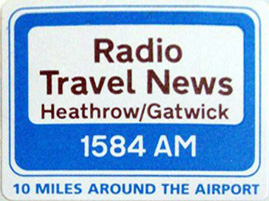P2 Focus of a radio station - Unit 14

Introduction In this report I will talk about the focus of a radio station of my choice and all the specific details about my chosen radio station and how it functioned. Chosen Station The radio station I chose to write this report about is the Airport Information Radio, AIR for short. The Airport Information Radio began broadcasting on the 25th June 1990 with live presentation from 5am-11pm 7 days a week. The service reached motorists within 10-12 miles from either London Heathrow or London Gatwick Airport; this means that it was a local station because it only reached people nearby the airports and was not a national radio station that spanned the United Kingdom. However, outside of the live presentation was a pre-recorded service with basic airport information. AIR was distributed by AM with a frequency of 1584 kHz. It did not have a sister station however the Heathrow service was original...





